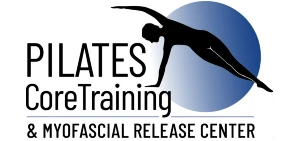How a Single Calf Muscle Can Affect Your Overall Health
Joseph Pilates was decades ahead of his time when he added footwork to his movement protocols. After all, the feet serve a very important function in human movement. Except in the case of a foot injury, any problem that appears to be with the foot is never actually a foot problem—it is always a misalignment higher up the kinetic chain, either from the lower leg muscles, knee, or hips.
In Pilates, the position of the foot is crucial in every exercise. But since Pilates has so many alignment and movement protocols, it can be overwhelming to add one more to be aware of so the foot position is often not addressed in the beginner series. However, as one progresses, there is a proper lower leg and foot position in every exercise.
The Pilates exercises on the equipment such as the reformer, trapeze push-up bar, or the wunda chair almost always begin with footwork to maximize ankle movement—and more importantly, ankle movement with the proper alignment of the ankle, knee, and hip. There is also foot alignment in the mat repertoire.
The soleus is an integral part of this movement. A lower leg muscle, it lies deeper than the gastrocnemius (which flexes the knee). The soleus (named due to its resemblance to the sole fish) arises from the Achilles tendon and points the toes (called ankle plantar flexion).
It is critical in the push-off phase of the walking gait. If someone has stiff ankles due to a weak or overly tight soleus, or inadequate hip extension, the soleus won’t contract enough for a complete push-off.
This can cause an affected gait to develop such as rocking side-to-side or shuffling the feet, instead of the natural rotation at the hip. Changes in gait can then cause issues such as the knees twisting inappropriately, as they are the innocent bystanders stuck at the scene of the crime between the hip and the foot. Pain and discomfort can result, causing additional problems.
The soleus muscle is also referred to as the Little Heart because it plays a crucial part in pumping blood back up to the heart. In fact, this “second heart” transcends its role as a plantar flexor and postural stabilizer and is now recognized as a multifaceted endocrine organ whose function affects overall health.
Since the soleus maintains stable blood flow to the brain during upright posture, preventing blood from pooling in the lower legs, people with strong soleus muscles are less likely to experience dizziness or fainting when standing.
Due to the soleus muscle’s circulatory assistance to the heart, research from the Mayo Clinic involving 2,728 patients showed that those with weakened calf muscle pump function experienced mortality rates of 8.9% at five years, compared to 2.4% in those with normal function—a nearly four-fold increase in death risk for patients with weak soleus muscles!
In 2022, the University of Houston performed a study in which participants performed soleus push-ups, which consisted of rising up and down on the toes while seated. The results were remarkable:
- 52% reduction in postprandial glucose excursions (the blood sugar fluctuations that occur after a meal)
- 60% decrease in insulin requirement
- sustained metabolic rate elevation for hours after exercise
- preferential oxidation of blood-borne substrates over stored glycogen, which ensures that the body uses fuel efficiently and maintains a stable energy supply for all its functions
With its role in posture, gait, diabetes management, taking pressure off of the heart, and increasing metabolism, you can see how vital a strong soleus muscle is to one’s health. And the key to this is exercise and movement.
In fact, a sedentary lifestyle is now referred to as the “new smoking” in terms of its detrimental effects on health.
We have seen how just one muscle is crucial to living a fully functional life. Imagine the possibilities when combined with the many other benefits of Pilates exercise! As Joseph Pilates said, “movement is life.” He even titled one of his books Return to Life.
Through a consistent Pilates practice, you can increase your strength and stamina, improve your flexibility, balance, and posture, and greatly enhance your health.
At Pilates Core Training and Myofascial Release Center in Pensacola, we believe in creating a wellness journey that integrates body, mind, and spirit. With a wide range of movement classes including Pilates, as well as services that cater to your individual needs, we provide a well-rounded, holistic approach to improve your overall wellbeing. Contact us today to learn more!
